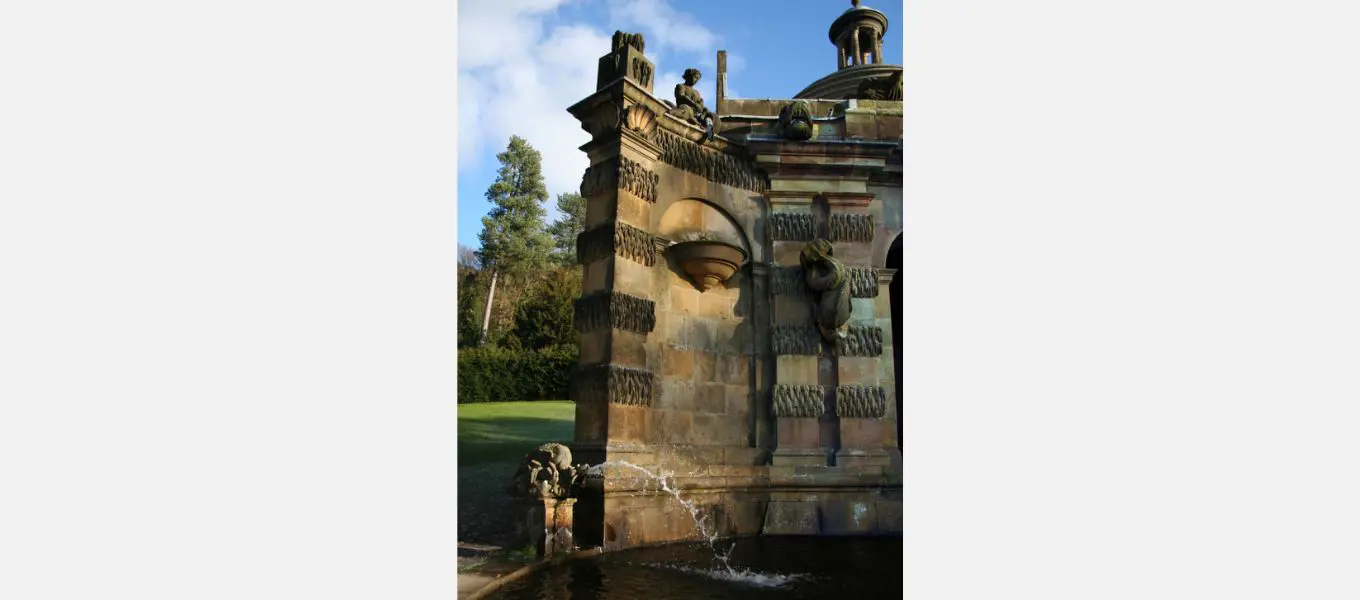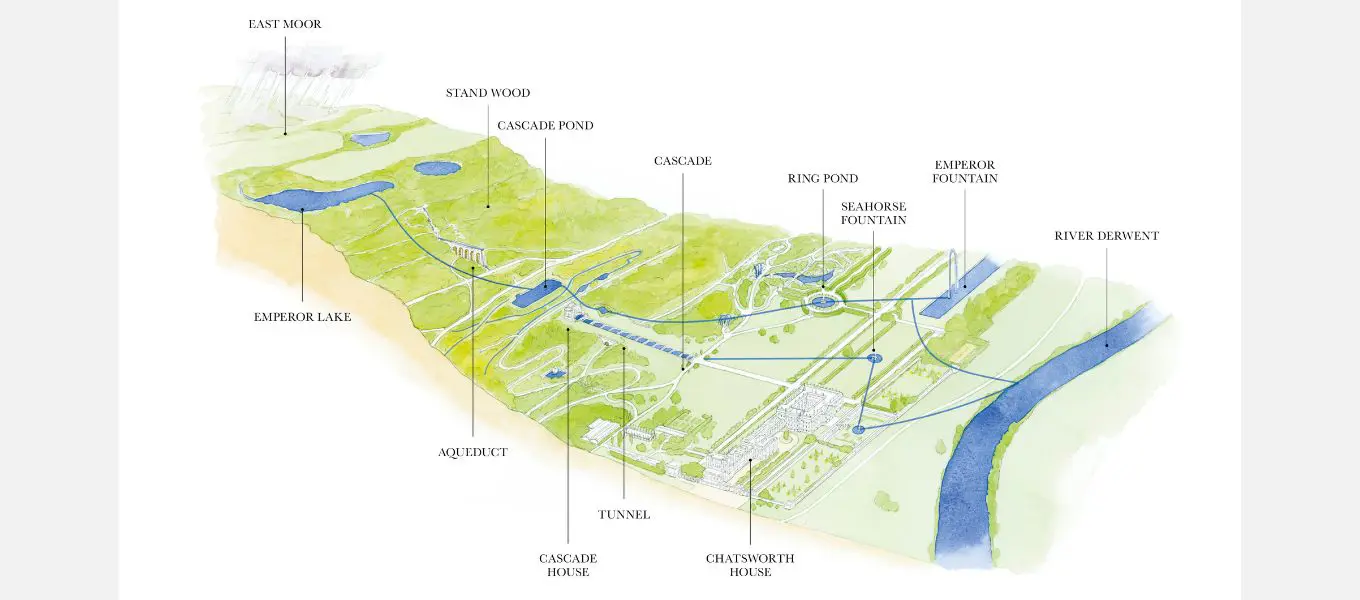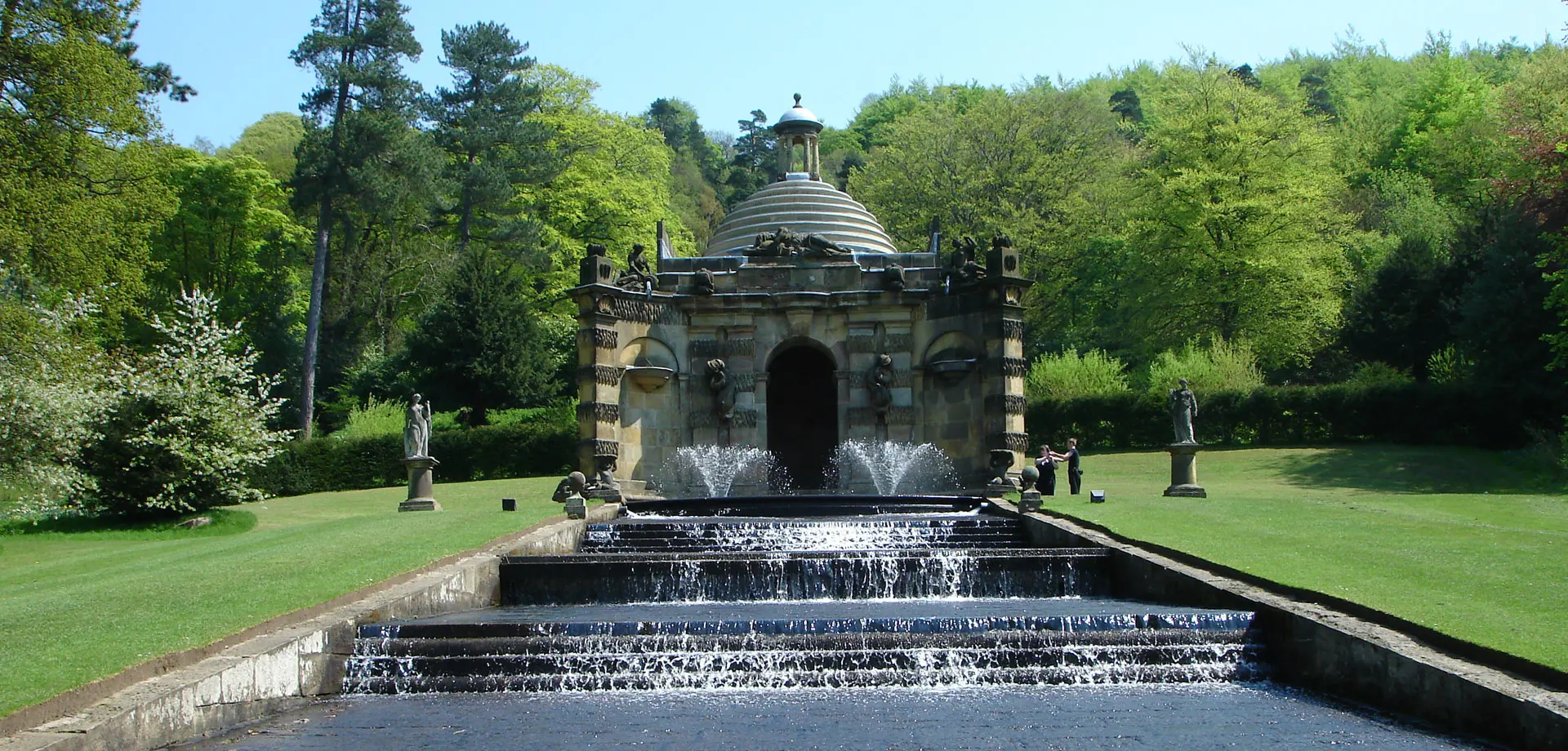The Grade I listed Cascade has been a highlight of the Chatsworth Garden for more than three centuries.
The original design was completed in 1696 by Monsieur Grillet, a French hydraulics engineer who had worked on the waterworks of Louis XIV of France. Grillet's design was shorter and, in some ways, more complicated than the one we see today.
The water flows over 24 steps that descend approximately 60 metres to mimic natural waterfalls. It takes advantage of the rainwater that drains from the east moors and collects in ponds on the hillside of the Derwent Valley within the Chatsworth Estate.

In 1702, the Cascade House, or Temple, was added at the top of the slope. Designed by Thomas Archer and featuring spouts, fountains and carvings by Samuel Watson and Henri Nadauld, the variation and flow of the water could be controlled from the Cascade House continuing the established tradition of water being used to surprise and delight visitors, one of whom in 1725 reported how jets within the building ‘throw up several streams and wett people’ (the spouts in the floor are still there).
The addition of the Cascade House was one of many alterations that have been made to the main water feature over the centuries.

Carvings and spouts on the Cascade House (credit Adrian Howe)
In 1713, the Cascade underwent significant changes, doubling in length and becoming wider and steeper than the original. These changes were likely the 1st Duke's response to the increasing influence of French culture on grand formal garden design.
Further alterations were made between 1825 to 1828, when the Cascade was repositioned to align with the South transept of the house and a new gravel path was constructed up the slope.
It now forms part of a larger system of ornamental waterworks. Water from the moors above the house is fed down through the woodlands and garden, powering the Cascade and a hydroelectric turbine on its way to the river Derwent, in a feat of nature-based engineering. Water from the Cascade's lower pool directly feeds the 1st Duke's Sea Horse Fountain on Chatsworth's South Lawn.

Many of these changes, including the addition and removal of ornamental accessories such as statues, can be identified in historical illustrations of Chatsworth, such as those by Jan Siberechts and Kip and Knyff's engraving.
Images: 1 - Kip & Knyffs engraving of Chatsworth, 2 - extract from Jan Sieberechts painting of Chatsworth
While the Cascade underwent some modifications in its early days, this was the result of evolving personal tastes and styles. However, as time went on, structural and design issues began to surface. By the early 1800s, it required frequent repairs and renovations.
Unfortunately, the construction of a coal tunnel beneath the Cascade in the 1830s to supply heat to the Great Conservatory, created further structural issues. The tunnel is no longer accessible to visitors due to serious damage caused by water seeping through the Cascade stonework and surrounding soil.

Celebrating the Cascade
In spring 2023, the Chatsworth House Trust, was awarded funding from The National Lottery Heritage Fund (NLHF) to help kick-start the 'Celebrating the Cascade' restoration project.
In addition to essential repairs to preserve the structure, a key element of the project will be a public outreach programme designed to make the Cascade, and the whole Chatsworth Garden, feel more accessible and exciting to visitors and learners of all ages and with a wide range of needs.
We will work closely with partners such as Derbyshire MIND and the Cavendish Learning Trust to explore the well-being benefits of visiting the Cascade. We'll also explore opportunities to bring the Cascade stories to life, such as its links to critical environmental and sustainability initiatives at Chatsworth, and its place in Chatsworth's natural 'water artery'.
While the funding award from the NLHF will help with essential research and development work, the full cost of restoring the Cascade has been estimated at over £7 million.
If you are able, there are many ways you can support the project and the work of the Chatsworth House Trust, a registered charity: buy a ticket to visit Chatsworth, add a Gift Aid donation, join our expanding Chatsworth Friends and Patrons programmes or make a regular or one-off donation online. Use the links below to find out more.
About Chatsworth House Trust
Chatsworth House Trust is a registered charity established in 1981 to look after the house, collections, garden, woodlands and park for the benefit of everyone.
Chatsworth Friends
Benefit from unlimited access to the house, garden and farmyard plus complimentary tickets to selected events and discounts at the shops, restaurants, hotels and inns whilst directly supporting the work of the charity.
Donate online
If you are able, support us by making a one-off or regular donation to the Chatsworth House Trust charity online.
Gift Aid
When you use Gift Aid, the government gives an extra 25% on top of your kind donation, in lieu of tax you have already paid. It is a rare opportunity to decide how your tax is spent, and all of this money goes directly to the work of Chatsworth House Trust.
Patrons of Chatsworth
Patrons play a vital role in supporting the long-term stewardship of Chatsworth and enjoy exclusive access to the collections and curatorial team via special events.



